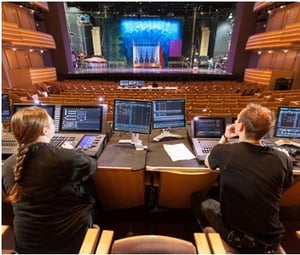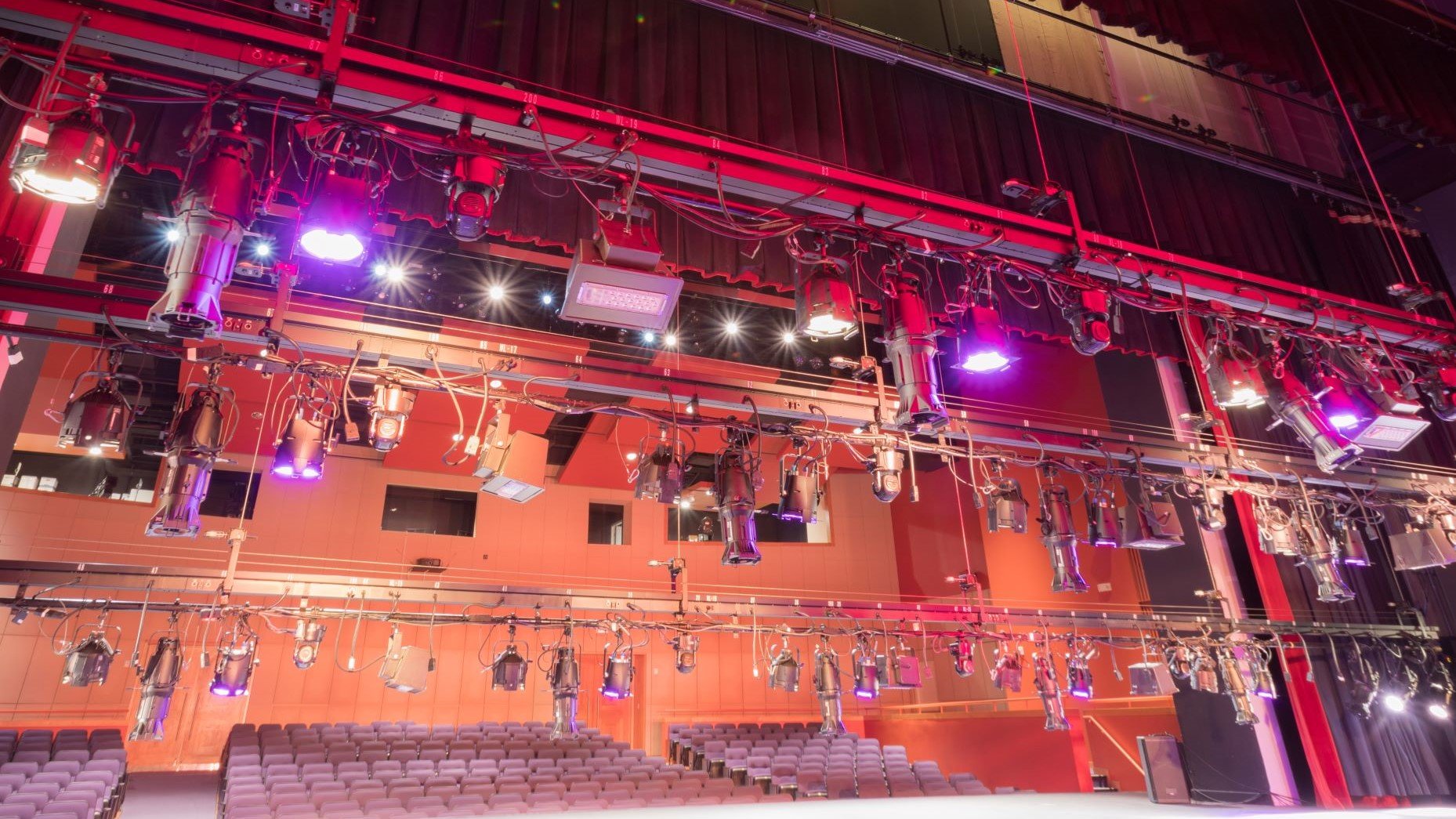Welcome back to our journey through the world of stage lighting design! In our previous installments, we explored the fundamental concepts of lighting, its key objectives, the versatile properties of light, the diverse types of lights available, and the role of lighting angles, colors, and lighting systems. Now that the lighting plan is finished, it is time to start hanging lights and get ready for the show.
Getting Technical
Working in theatre can be dangerous if safety isn’t everyone’s priority. Before you start to rig any lighting, there are several checks that should be completed first for each light that you are going to hang.
- Electrical
- Mechanical
- Optical
Electrical checks
Before you hang any of the lights, you should inspect each one for electrical safety. It is worth looking into your local legislation as most countries have laws that require that each electrical apparatus is tested for electrical safety and compliance every year (this should be done by a qualified professional) but it is a good habit to do a quick visual check on each unit each time before you use it.
- Check the plug
- Are there any exposed wires?
- If it rattles when you shake it, there might be something loose inside – so get it checked
- Check the cable
- Is the outer sleeve damaged?
- Are there any exposed wires?
- Is there any exposed copper?
- Is the cable properly secured to the fixture?
- Check the lamp holder (in the case of tungsten lights)
- Are the wires burnt?
- Are there exposed bits of copper wire?
- Is the earth cable properly attached?
- Is the lamp sitting securely in the holder?
Mechanical checks
It is important to make sure that the light is working properly and that you will be able to focus it the way you want. A quick visual inspection of the following elements will save you lots of time later on:
- Is there a safety cable attached to the light?
- Is the hook clamp fastened securely with the correct bolts, nuts and washers?
- Does the yoke move freely but lock off securely?
- Do the focus mechanisms (lens tube, or lamp adjustment knobs) move freely but lock off securely?
- Are the accessories (barndoors, color frames, shutters, gobo holders, etc.) properly secured and working correctly?
Optical checks
For lights to perform at their optimum, it is important that the optical systems (lamps, reflectors, lenses) are all clean and working properly. It is worth checking the following points before you hang the light:
- Lenses
- Are they clean and free of dust and grime?
- Are they free of cracks or other damage?
- Reflectors (for tungsten lights)
- Are they clean and free of dust and grime?
- Are they free of cracks and other damage?
- Are they secured and aligned properly?
- Lamps (for tungsten lights)
- Are they clean and free of dust and grime?
- Are they free of cracks and other damage?
- REMEMBER – if you have to change the lamp, NEVER touch the glass with your fingers. Always use a cloth to handle and replace the lamps. If you do touch the glass accidentally, be sure to wipe it clean with an alcoholic swab to remove any fingerprints and residue.
If something looks wrong or feels unsafe, do not use it until you have had it inspected by a qualified professional. Once all the safety inspections have taken place, you can start to hang the lights on the bars. When all the lights have been rigged and plugged in, take some time to “flash out” every circuit to make sure the light is working. Checking as you work will save you time in the long run. You may need to patch the lights into the lighting desk first before you can control them. If your theatre has lighting bars that fly in and out, once you have made sure that everything is rigged correctly and working properly, you can set the “trim” on the bar. This is the height that you want the bar to be for the show. If there is a set, that will probably need to be installed before you can start to focus.
 The focus session is the time when you get to set all the lights where you want them. There is usually a large team required for the focus session. Typically, there will be one person sitting at the lighting desk to bring up the lights so they can be focused. There will be a person in a bucket lift or at the top of a ladder who is doing the focusing. There will be a couple of people at the bottom of the ladder supporting it (always ensure that you are working within the ‘safe practice for working at height’ guidelines), and there will be the lighting designer who will be giving the instructions to the person who is focusing. When you have set each light where you want it, before moving on to the next light, be sure to give the instruction to “lock it off.” This means that all the locking mechanisms should be tightened so that it will not move once you have finished.
The focus session is the time when you get to set all the lights where you want them. There is usually a large team required for the focus session. Typically, there will be one person sitting at the lighting desk to bring up the lights so they can be focused. There will be a person in a bucket lift or at the top of a ladder who is doing the focusing. There will be a couple of people at the bottom of the ladder supporting it (always ensure that you are working within the ‘safe practice for working at height’ guidelines), and there will be the lighting designer who will be giving the instructions to the person who is focusing. When you have set each light where you want it, before moving on to the next light, be sure to give the instruction to “lock it off.” This means that all the locking mechanisms should be tightened so that it will not move once you have finished.
Once all the lights have been focused, it is time to start plotting.
The plotting session is the time where you get to build up and program the cues into the lighting desk. This is the time where you set the intensities, select the colors and adjust any of the other parameters that you might have control over to create your cue list based on the notes you have made from reading the script, talking to the director and watching rehearsals. You do not need to have all your cues finished at this stage – but it is a good idea to at least have a rough look for each scene – that way, it will give you a base to build on during the technical rehearsals and will give you a starting point to show the director. While you are building your cues, keep your objectives in mind as this will form the building blocks of your design:
- Start with the lights that will give you the visibility you need (front lights).
- Add the lights that sculpt and give the scene dimension (side or back lights).
- Choose the colors to help support the mood of the scene
- Add in any lights that help impart information about the scene – time of day, location, etc.
- Finally, look at the cue critically and make sure that you have created a beautiful composition.
- You can adjust the timings of the cues in the technical rehearsals, so you do not need to worry too much about this for now.
Even though you are working towards achieving all your objectives, it is not always essential, or even possible, to hit all five objectives in every cue.
Once you have a rough cue list programmed, it is probably time to get the actors on stage and start the technical rehearsals.
 Technical rehearsals are when all the technical elements and the actors come together for the first time. You will get to see the costumes under the lighting you have created, you will get to see the set come to life with your lighting layered on top and the actors will get a chance to rehearse with the technical elements of the show. It can usually be a slow process and you may need to make changes to your lighting as you work through the play with the actors and the director.
Technical rehearsals are when all the technical elements and the actors come together for the first time. You will get to see the costumes under the lighting you have created, you will get to see the set come to life with your lighting layered on top and the actors will get a chance to rehearse with the technical elements of the show. It can usually be a slow process and you may need to make changes to your lighting as you work through the play with the actors and the director.
Once you have worked through the show you will then put it all together and run it through in a dress rehearsal. There will hopefully be some time for notes after the dress rehearsals which is when you make any final adjustments to the lighting design.
All that is left is to invite the audience and have the opening performance!
As we wrap up our blog series on stage lighting design, we hope you've found the information both informative and engaging. Stay tuned for our upcoming glossary, a valuable resource on the subject. Explore this content and more in our free digital guide, Stage Lighting Design: An Introduction, which can be downloaded alongside a set of accompanying posters. For further information on the diverse range of lighting products offered by ETC, visit etcconnect.com.
Missed the previous posts in this blog series? Check them out here:
Stage Lighting Design, Part 1: Introduction to Lighting
Stage Lighting Design, Part 2: Objectives of Lighting Design
Stage Lighting Design, Part 3: Controllable Properties of Light
Stage Lighting Design, Part 4: Types of Lights
Stage Lighting Design, Part 5: Lighting Angles
Stage Lighting Design, Part 6: Color
Stage Lighting Design, Part 7: Lighting Systems
Stage Lighting Design, Part 8: Planning Your Design


